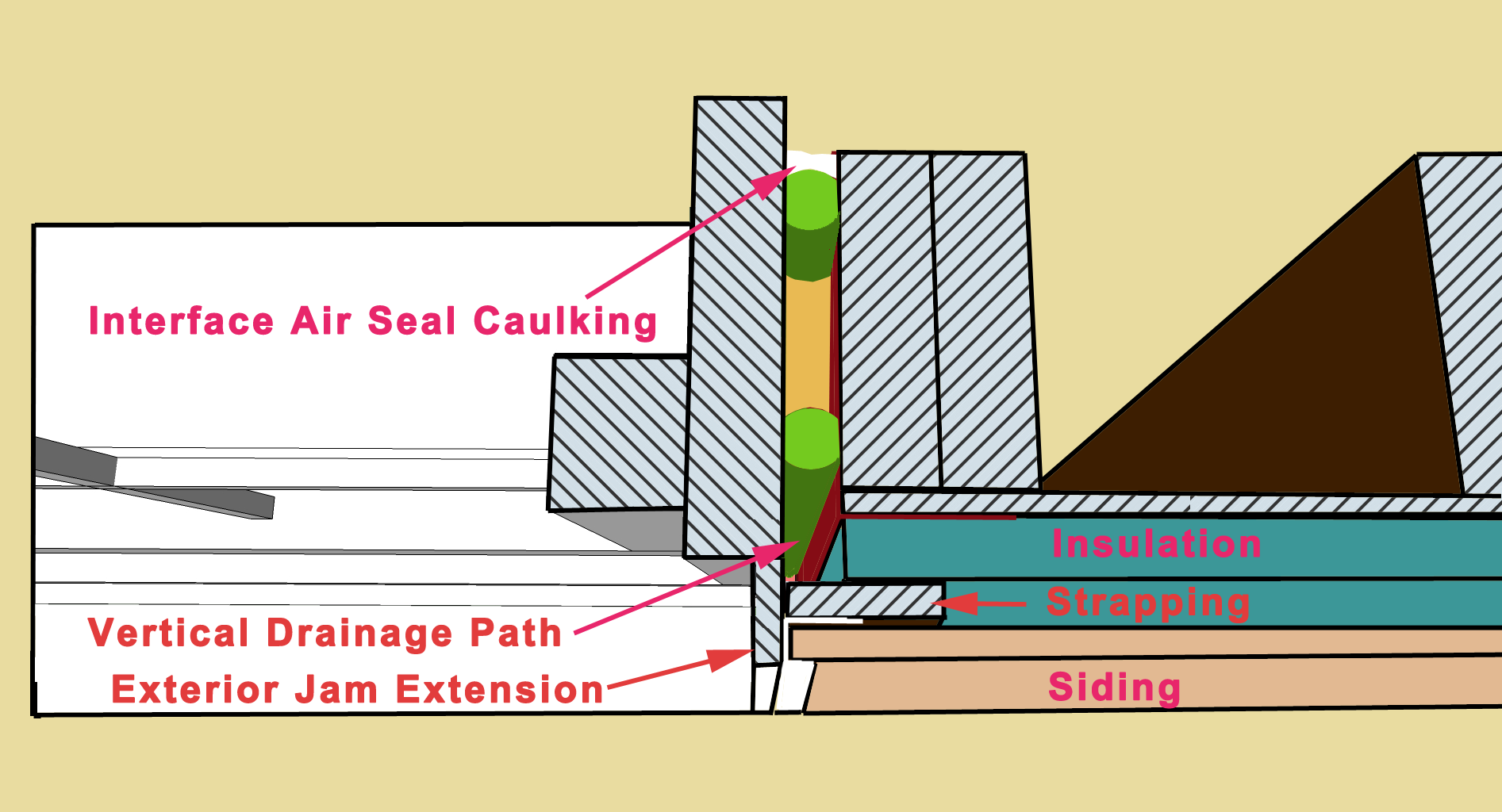
News
Dealer’s Corner
Fabrication
Profiles & Framing Systems
Rainscreen installation method update
May 25, 2023 By Jon Eakes

Construction science researcher and educator Jon Eakes has issued an update to his research into a novel concept for installing windows designed to prevent water damage to frames. Fenestration Review has been following Eakes’ work since 2018.
Prior to the Covid shutdowns, two colleges had started lab research projects to expand our understanding of using rainscreen type pressure equalization inside the window/wall interface, rather than today’s standard of often unsuccessful surface sealing. The overall objective of this research is to improve moisture control at the interface, perhaps with no exterior caulking and hence no danger from poor maintenance. Both projects were put on hold with campus pandemic closures and then still hampered towards the end of the pandemic with considerable changes in personnel. Life has slowed down for all of us.
Although we are awaiting the final reports from both colleges, I wanted to break the silence and tease a bit of what has been learned – all awaiting the final official reporting and analysis of the data very soon.
Projects
BETAC, a branch of Red River College in Winnipeg, has two large research climate chambers. Way back in 2019, a number of you visited that facility as a field trip during the WinDoor conference. They undertook two projects at BETAC: lab testing the thermal penalty for not fully insulating the window/wall interface in order to liberate space for an active drainage layer in the outer section of that interface; and studying water penetration into the interface with various weather barrier treatments.
George Brown College has much smaller facilities but some experience with pressure equalization, so their focus was specifically to see if pressure equalization can make a real difference in moisture control, perhaps even eliminate the need for exterior caulking. That, combined with the thermal work at BETAC, could redefine the space between the window and the wall.
REPORTING PROCEDURES
BETAC has contractual obligations to their government funding sponsor to publish the results only after they have been reviewed, which should be completed soon. The George Brown College matching funds came from the window industry and myself, so the bureaucracy is lighter and the final results are currently being written.
Insights
So, while waiting for official final results, what are the teasers?
At BETAC, I learned along the way that the initial incomplete data did show that there was little thermal penalty for stopping the insulation at the glass plane, leaving the rest of the interface outward free for a drainage plane and moisture control. I am anxious to see the final analysis of the official thermal loss data.
This gives validity to the work at George Brown College in Toronto where we were concentrating totally on moisture penetration and pressure equalization in an un-insulated drainage cavity. Wind blown rain penetration of what would be considered an unsealed weather barrier was increased as holes were introduced to the indoor air barrier over the window/wall interface. A well sealed inside air barrier showed no signs of the driving force of the wind except where line-of-sight openings gave the water direct access. When the line-of-sight opening was covered with a totally unsealed “baffle”, all moisture movement was reduced to a slow dripping down the drainage path while the storm was raging on the other side of the wall. This did cause puddling on the horizontal sill, supporting the need for an outward drainage sloped sill.
STILL TO COME
The final reports will determine if my optimism that there is truly a moisture control mechanism that could be economically deployed in low rise residential construction is justified. One of the lessons I learned from these two experiences is that because we are so identified with sealing out the water at the weather barrier plane, it is still very difficult to explain what we are trying to test to the very people building the test rigs. It is even difficult to communicate the fact that our traditional window test protocols with indoor vacuum rigs cannot measure the contribution of wind driven pressure equalization to moisture control. Even the testing personnel were surprised to see that with the right elements in place, heavy wind blasting heavy rain on the outside of an unsealed window/wall interface can be seen inside the cavity as lazy dripping of water down the drainage plane moving with no driving force other than gravity.
These experiences should help us to refine future testing. But let’s see the final reports and videos from this initial testing first.
For a refresher on the initial pressure equalization project, visit my web site at the following link, and don’t miss the video: https://joneakes.com/jons-fixit-database/2286-applying-rain-screen-principles-to-window-and-door-installations
Print this page
Leave a Reply